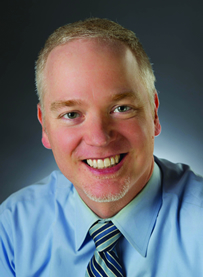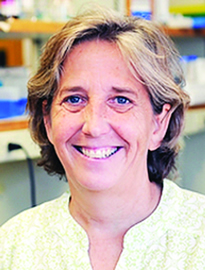As body weight and sedentary lifestyle continue to increase in the United States, there are increasing health implications unique to the autoimmune population, particularly patients with inflammatory arthritis.
In a Monday afternoon symposium, a panel of experts will explore the basic science of exercise, adiposity, insulin resistance, and skeletal muscle in patients with autoimmune arthritis. The ARHP Concurrent Session The Science Behind Exercise and Body Composition in Rheumatoid Arthritis Inflammation takes place from 2:30 – 4:00 pm in room 206.

Jon T. Giles, MD, MPH, Assistant Professor of Medicine at Columbia University College of Physicians and Surgeons in New York, will present on adiposity and inflammation in rheumatoid arthritis.
“We’ve been interested for quite a while in how adipose tissue is affected by rheumatoid arthritis and, vice versa, how adipose tissue affects rheumatoid arthritis,” Dr. Giles said. “Initially, our research focused on quantifying whether RA patients had more adipose tissue than non-RA patients, and if the distribution of adipose tissue was different in RA patients.”
Dr. Giles and his colleagues performed imaging evaluations from a number of studies in order to determine how much and where adipose tissue was in rheumatoid arthritis patients and found that RA patients tended to have more adipose tissue than non-RA patients and that the adipose tissue was indeed distributed differently in RA patients.
“In general, we observed that RA patients had more fat tissue and also less muscle,” he said. “We then became interested in what the implications of having more fat tissue was for the RA patient, and we found that RA patients who had more adipose tissue, especially in their arms and legs, had a harder time doing physical function tasks.”
In fact, he added, their findings suggested that the amount and distribution of adipose tissue in patients was just as important as how many swollen and tender joints they had and how damaged their joints were.
“Surprisingly, in some cases, it was a bigger determinant of what they could do than what their arthritis was doing to their joints,” Dr. Giles said. “This suggests that, if you could alter either the amount or distribution of fat in RA patients, you could probably help them in getting around and doing the tasks of their daily living as much as you could by decreasing the amount of swelling or damage in their joints.”

Also during this symposium, Kim M. Huffman, MD, PhD, MHSc, Associate Professor of Medicine at Duke Molecular Physiology Institute in Durham, NC, will discuss the effects of insulin resistance, adiposity, and inactivity in rheumatoid arthritis.
“Given the increased risks for cardiovascular disease in rheumatoid arthritis and the relationship between insulin resistance and cardiovascular disease, this is an important topic of discussion,” Dr. Huffman said.
Previous studies, she said, have produced conflicting results based on the populations studied or the techniques used to define insulin sensitivity — fasting-based measures, which reflect liver function, versus non-fasting-based measures, which are more indicative of skeletal muscle insulin sensitivity.
“Since skeletal muscle is responsible for 80 to 90 percent of glucose uptake, we believe skeletal muscle insulin sensitivity is the most relevant for disease and that stimulated tests, such as glucose tolerance tests, are the best measures,” Dr. Huffman said. “In a sample of persons with RA who exhibited a wide range of disease activity, but overall were well-controlled, we found there was little difference in skeletal muscle insulin sensitivity, as determined by an intravenous glucose tolerance test, when compared to age, gender, and BMI-matched controls.”
Even in those patients with the most active disease, she said, the best predictors of insulin resistance in RA were measures of adipose depots rather than disease activity. Also, while statistical significance was borderline, Dr. Huffman said their research supports findings from other studies that prednisone, even at doses less than or equal to 5mg a day, contributes to skeletal muscle insulin resistance.
“While skeletal muscle inflammation has been shown to contribute to skeletal muscle insulin resistance, we did not find this in RA muscle,” she said. “We believe these findings highlight an RA-specific skeletal muscle process that, while not leading to disturbed glucose handling, contributes to disability in rheumatoid arthritis.”

The impact of circadian rhythms on physical activity and skeletal muscle and the implications for inflammatory disorders will be the topic of a presentation by Karyn Esser, PhD, Professor in the Department of Physiology and Functional Genomics and Associate Director of the Myology Institute at the University of Florida, Gainesville.
“We have shown over the last 10 years that the mechanism that regulates circadian biology exists in muscle and, if we disrupt the circadian biology of the muscle, we actually see both metabolic and functional pathologies,” Dr. Esser said. “That suggests that if we do things that disrupt the rhythms, it could lead to things like insulin resistance, type 2 diabetes, fibrosis, and significant weakness.”
Dr. Esser said her lab was looking at the molecular mechanisms that regulate the circadian “clocks” in muscle and how they might be impacted by a person’s lifestyle and activity levels.
“Particularly for muscle, we’ve found that what time of day you are active and use your muscles plays a big role in setting the timing of the clock and how robust the clocks are,” she said. “Most clinicians have probably never thought about circadian rhythms, but they may be affecting their patients and exacerbating pathologies.”
